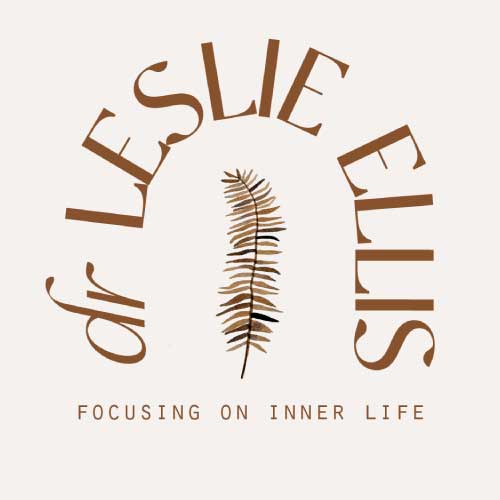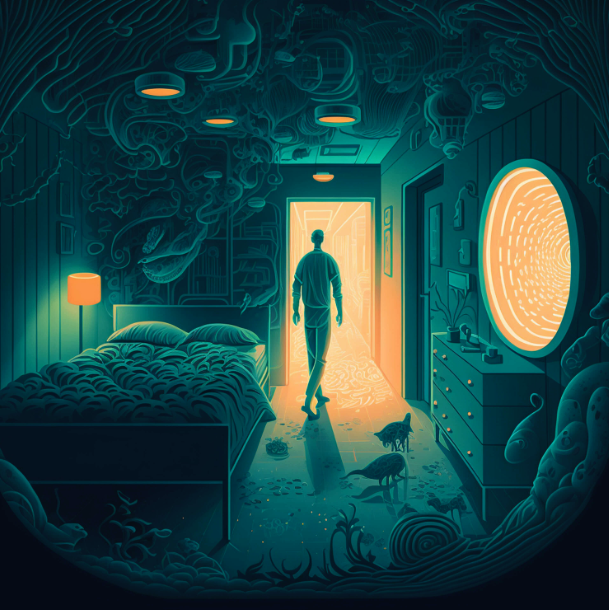By Dr. Leslie Ellis
Our scariest nocturnal experiences may not be the greatest cause for concern. Those who experience sleep paralysis wake up while still in a dream state, unable to move a muscle. This is often accompanied by the sense of a malevolent presence in the room, even right in bed! Believe it or not, the experience of paralysis is a normal part of our sleep cycle, our body’s way of protecting us from enacting our dreams. When our circadian rhythm is off, we can wake up before sleep paralysis has switched off which can be terrifying if you don’t understand it.
But this is not the worst thing.
What can be more ominous and dangerous is when sleep paralysis does NOT happen as it should, and instead, the dreamer enacts their dream scenarios. In rare cases, murders have been committed during such episodes. Comedian Mike Birbiglia suffers from this condition, called REM (rapid eye movement) Behavior Disorder, or RBD. His wild nocturnal experiences are a frequent subject of his highly popular shows, and the basis of an award-winning movie, Sleepwalk With Me.
In one sketch, Mike describes how he dreamt of being the target of a guided missile with coordinates set specifically on him. His dreamtime logic told him to jump out the window so the explosion would detonate outside, away from his platoon. He actually did this, despite the fact that he was on the second floor of a motel, and the window was closed. He landed, cut up, on the grass, got up and kept running… until he slowly realized, with relief at first, that he was in his underwear, bleeding, on a cold January night. He was dreaming, not actually being attacked! He was lucky his injuries were not worse. His doctor diagnosed him with RBD, and he now sleeps in a neck-high sleeping bag with mitts on to prevent him from unzipping it and potentially hurting himself.
About RBD
There are many ways to treat RBD, but one of the most important things to do is ensure the nocturnal safety of both the person who has it, and their bed partner, if they have one. Mike’s sleeping bag is not a bad idea. Sleep medicine experts suggest removing all sharp objects and weapons from the bedroom, padding the floor, lowering the mattress, placing a pillow between you and your bed partner, or even sleeping in separate beds.
Let’s back up a step though. Just what is RBD, what are its causes and what can you do?
RBD is now thought to be the initial symptom of neurodegenerative disease, and it most often affects older men. Up to 90% of those with idiopathic RBD (ie that is not a side effect of medication or other known causes) go on to develop neurodegenerative disease, usually Parkinson’s or dementia with Lewy bodies. Research suggests that RBD is the manifestation of an otherwise covert disease already present in the brain, rather than simply being associated with an increased risk of future development of disease. While treatments exist, there are no known therapies to slow the rate of degeneration – although the disease process itself can be very slow. Exercise has been shown to be neuroprotective, and a recent study shows it may help with RBD. Risk factors such as smoking, alcohol use and depression can be addressed. RBD is also associated with concussions, hyposomnia, arthritis, pesticide explosure, constipation and family history of neurodegeneration. It can be also brought on by use of anti-depressants, and in this case, stopping the medication can stop the RBD.
The American Academy of Sleep Medicine (AASM) suggests four medications that can be used to treat RBD: clonazepam, melatonin, pramipexole, and rivastigmine. Each has a different mechanism of action and each has its pros and cons. Of course, seek the advice of a sleep medicine professional about their use. (Howell’s 2023 AASM articles below also provide more detail.)
Options for Managing RBD
First, be sure to get a proper diagnosis. Sleepwalking and night terrors are also characterized by movement and intense vocalization during sleep. However, these happen during the first half of the night, during deep sleep versus REM, are not recalled by morning, and are more common in children. RBD episodes are dream enactments, most common in older people and can usually be remembered.
While RBD that is not associated with drug use or secondary to a medication condition may not be curable, it can be managed in various ways. Keeping safe is a priority because although those with RBD can go for long periods without an episode, dream enactments are always possible.
One partial solution, aimed at keeping those with RBD safe, is a bed alarm system (ie the Posey Sitter Select). Using pressure pads under the shoulders, and optional tether, the system detects when the user starts to get out of bed, and play a custom voice loop that tells something like: go back bed, you are dreaming. A small study found this device not only prevented injury but reduced overall dream enactments, possibly because it reduced the dreamer’s worries about hurting themselves or their partner.
In my practice, I have worked with the nightmares of those with RBD, reasoning that if one has fewer intense or violent dreams, enactments will be less frequent and dangerous as well. This has been the case with several patients, although like all RBD treatments, it is not a perfect solution, but rather can become part of an overall management strategy. Lifestyle changes, embracing the joys of life, befriending and potentially developing more control of one’s dream life are some positive responses to RBD. Or, like Mike, you can find and express some of the humor inherent in this otherwise potentially serious condition.
References:
Management:
Howell, M., Avidan, A. Y., Foldvary-Schaefer, N., Malkani, R. G., During, E. H., Roland, J. P., … & Ramar, K. (2023). Management of REM sleep behavior disorder: an American Academy of Sleep Medicine systematic review, meta-analysis, and GRADE assessment. Journal of Clinical Sleep Medicine, 19(4), 769-810.
Howell, M., Avidan, A. Y., Foldvary-Schaefer, N., Malkani, R. G., During, E. H., Roland, J. P., … & Ramar, K. (2023). Management of REM sleep behavior disorder: an American Academy of Sleep Medicine clinical practice guideline. Journal of Clinical Sleep Medicine, 19(4), 759-768.
Helpful adjunctive treatments:
McCarter, S. J., Boeve, B. F., Graff-Radford, N. R., Silber, M. H., & St. Louis, E. K. (2019). Neuroprotection in idiopathic REM sleep behavior disorder: a role for exercise? Sleep, 42(6), zsz064.
A device to protect from dream enactment behavior (DEB) and bed injury
Howell, M. J., Arneson, P. A., & Schenck, C. H. (2011). A novel therapy for REM sleep behavior disorder (RBD). Journal of Clinical Sleep Medicine, 7(6), 639-644A.
Risk factors:
Xiang, Y., Zhou, X., Huang, X., Zhou, X., Zeng, Q., Zhou, Z., … & Guo, J. (2023). The risk factors for probable REM sleep behavior disorder: A case-control study. Sleep Medicine, 110, 99-105.

